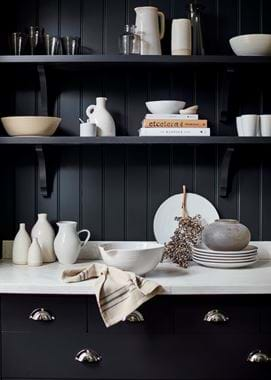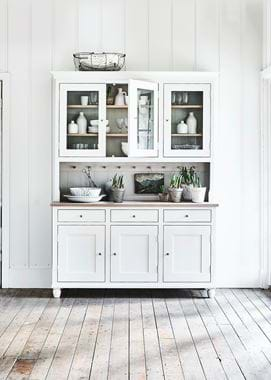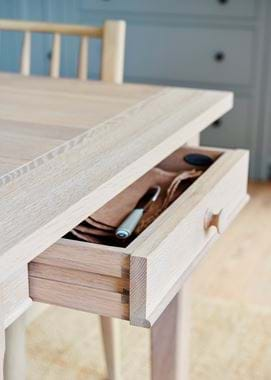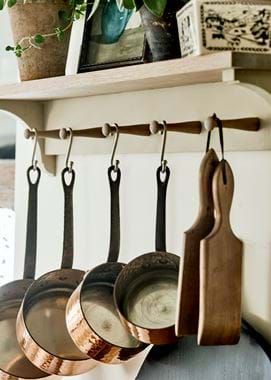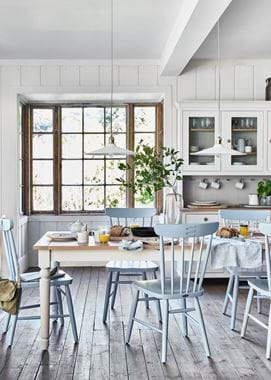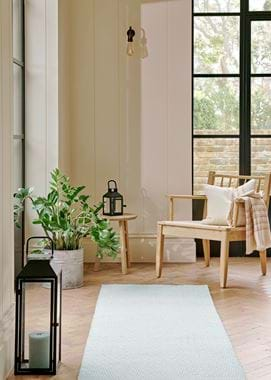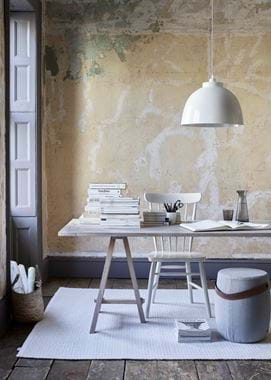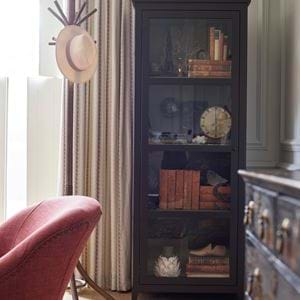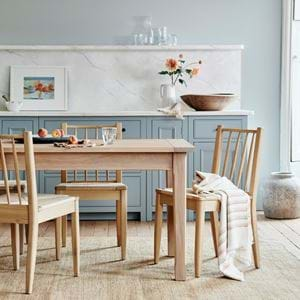What the Shakers taught us
What the Shakers taught us
Shaker style is an aesthetic and set of design principles that wasn’t borne out of fashion, neither from architecture nor nature and landscapes. The Shakers are in fact a religious, breakaway sect of the Quakers formed in the 1700s, who believe the practice of simplicity is a form of prayer. Part of how they show and honour their belief is by creating their own style of furniture. Furniture that focuses on use and purpose over ornamentation and decorative detail. Furniture that shows how, by honouring function, you can be lead to the most beautiful form. Here, in honour of the Shakers, we take a look at three of the guiding principles of Shaker design to welcome into your home.
Prioritisation and necessity
This is one of the Shakers’ greatest examples of discipline in design. Before making any piece of furniture, they ask whether or not it is actually needed. They have real clarity of need versus want. What’s refreshing is the lack of indulgence and the freedom from clutter.
The Shakers are exemplary in gathering in their homes only what is required. It’s why they’re often associated with minimalism (though this is an entirely different design movement), because they typically fill their homes with fewer things. They’re more like ‘reductionists’.
This way of approaching how you design your home and what you choose to fill it with makes it easier to identify which are the pieces to invest in, which are the ones that you’re always going to need and which are required to last the course. Bring in elements of want as well though – that’s all part of the fun of decorating your home and making it feel most like you.
Utility and function
This second principle is more to do with how a piece is designed. It’s probably the Shaker ethos that most inspires our own collection. Shaker furniture is always created with function front of mind. The entire focus is on performance and fulfilling objectives of use and purpose. They believe that the beauty in a piece comes from its ability to work well, to do as intended.
Pared-back forms, unfussy silhouettes, clean character and so on, are all descriptions used to define Shaker pieces. They aren’t concerned with flounce and flourish. These are just distractions from, and contradictions to, purity in function. ‘Beauty rests in utility’ is one of the phrases for which they’re most recognised.
Even if Shaker simplicity isn’t a look that suits you or your home, what this principle reminds you of is to never compromise on the usefulness of a design. It tells you that choosing pieces for your home on face value alone won’t serve to make you happy in the long-run, because beauty runs below the surface too. Having fewer pieces in your home that are designed to be beautiful inside and out, rather than lots of pieces whose beauty is only skin-deep, is a route to a happier home.
Integrity and longevity
Shaker designs are renowned for their quality. They believe in making furniture once and well to avoid being wasteful of both time and materials. Not only that, but because their furniture is an expression of faith and servitude, they hone every piece to perfection. Their furniture embodies a commitment to quality.
Natural materials and the art of hand-made are honoured, but the Shakers are also responsible for creating advancements in machinery too if it serves to be useful. The circular saw, for example, was an invention of the Shakers, because it produces more accurate cuts.
It’s this Shaker principle that reaffirms not to sacrifice the quality of the furniture that you have in your home. Seek out the pieces that are made in the way that they should be, from every angle and at every join, and from the best material for the item in question.
Invest in the pieces that have been designed to last the course.

